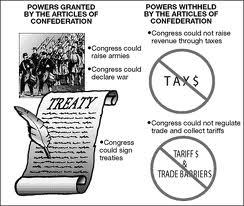 Gregory Lee Johnson burned an American flag outside of the convention center where the 1984 Republican National Convention was being held in Dallas, Texas. Johnson burned the flag to protest the policies of President Ronald Reagan. He was arrested and charged with violating a Texas statute that prevented the desecration of a venerated object, including the American flag, if such action were likely to incite anger in others. A Texas court tried and convicted Johnson. He appealed, arguing that his actions were "symbolic speech" protected by the First Amendment. The Supreme Court agreed to hear his case. What do you think the Court decided?
Gregory Lee Johnson burned an American flag outside of the convention center where the 1984 Republican National Convention was being held in Dallas, Texas. Johnson burned the flag to protest the policies of President Ronald Reagan. He was arrested and charged with violating a Texas statute that prevented the desecration of a venerated object, including the American flag, if such action were likely to incite anger in others. A Texas court tried and convicted Johnson. He appealed, arguing that his actions were "symbolic speech" protected by the First Amendment. The Supreme Court agreed to hear his case. What do you think the Court decided? Case 2: Engle vs. Vitale (1962)
 A New York State Law required public schools to open each day with the pledge of allegiance and a non-denominational prayer in which the students recognized their dependence upon God. The law allowed students to absent themselves from this activity if they found it objectionable. A parent sued on behalf of his child, arguing that the law violated the Establishment Clause of the First Amendment. Click on the following link for a quick explanation of the establishment clause: http://www.nolo.com/dictionary/establishment-clause-term.html. What do you think the Court decided?
A New York State Law required public schools to open each day with the pledge of allegiance and a non-denominational prayer in which the students recognized their dependence upon God. The law allowed students to absent themselves from this activity if they found it objectionable. A parent sued on behalf of his child, arguing that the law violated the Establishment Clause of the First Amendment. Click on the following link for a quick explanation of the establishment clause: http://www.nolo.com/dictionary/establishment-clause-term.html. What do you think the Court decided? Explain your answer. Click on the link below to read the decision made by the Supreme Court:
http://usinfo.org/docs/democracy/47.htm
On your Google document include the decision made by the Supreme Court
Case 3: Morse vs Frederick (2005):
 Joseph Frederick, a senior at Juneau-Douglas High School, unfurled a banner saying "Bong Hits 4 Jesus" during the Olympic Torch Relay through Juneau, Alaska on January 24, 2002. Frederick's attendance at the event was part of a school-supervised activity. The school's principal, Deborah Morse, told Frederick to put away the banner, as she was concerned it could be interpreted as advocating illegal drug activity. After Frederick refused to comply, she took the banner from him. Frederick originally was suspended from school for 10 days for violating school policy, which forbids advocating the use of illegal drugs.
Joseph Frederick, a senior at Juneau-Douglas High School, unfurled a banner saying "Bong Hits 4 Jesus" during the Olympic Torch Relay through Juneau, Alaska on January 24, 2002. Frederick's attendance at the event was part of a school-supervised activity. The school's principal, Deborah Morse, told Frederick to put away the banner, as she was concerned it could be interpreted as advocating illegal drug activity. After Frederick refused to comply, she took the banner from him. Frederick originally was suspended from school for 10 days for violating school policy, which forbids advocating the use of illegal drugs.To find out the decision of the Supreme Court, click the following link:
http://www.oyez.org/cases/2000-2009/2006/2006_06_278/
On your Google document include the decision made by the Supreme Court.
When finished with all of the cases, share with me.









